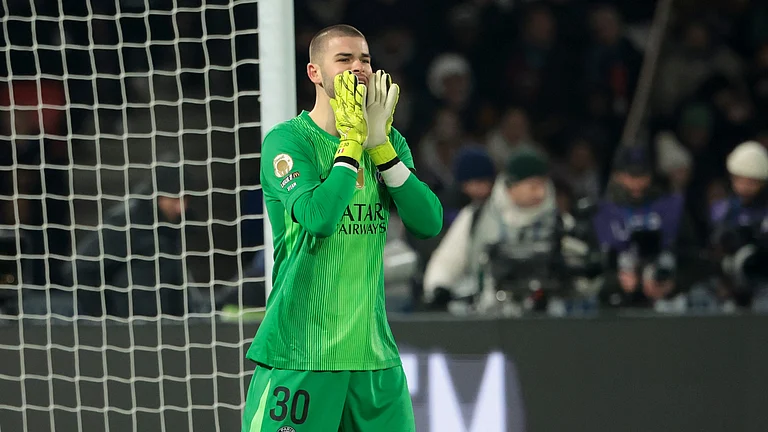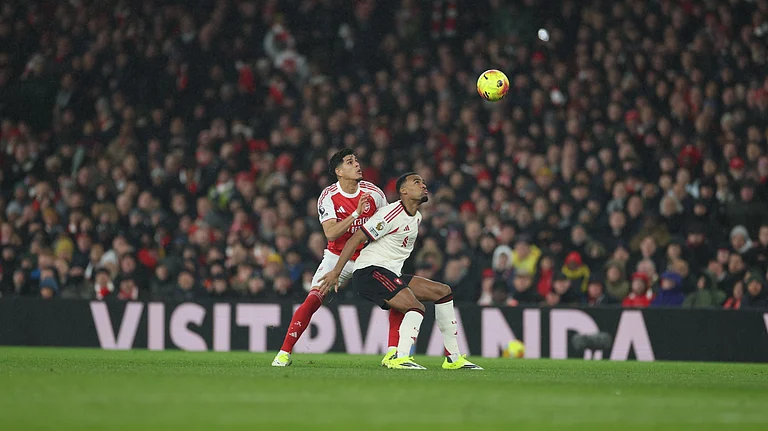As the Election Commission of India (ECI) announced the poll schedule for the five state assemblies —Rajasthan, Madhya Pradesh, Chhattisgarh, Mizoram and Telangana— on Monday, the pitch for the crucial semi-final prior to the 2024 general elections seems to be ready. The results of these elections on one hand, would reflect on the viability of Modi wave that swept away the 2019 Lok Sabha elections despite Congress winning several states ahead of it; on the other hand, it would be the first significant challenge in front of the Opposition INDIA bloc to prove the strength of their alliance and solidarity.
However, among the poll-bound states, Madhya Pradesh secures a special spot due to several political factors. With 230 assembly seats, it has been one of the bastions of the Bharatiya Janata Party (BJP) since 2003. Except 2018, when in a neck-and-neck fight, Congress led by Kamal Nath became the single-largest party with 114 seats, only to face MLAs' defection in 2020 paving the way for Shivraj Singh Chouhan to become the fourth-time Chief Minister, the BJP has always managed to keep up its core voting base. But this election is not going to be easy for the party given the internal rift and anti-incumbency that led to the high command’s decision to field central leaders in the stronghold of state-level leaders.
There are majorly four political factors that would determine the fate of both the ruling party and the opposition alliance. Firstly, the internal rift within the BJP coupled with the outflow of its leaders; secondly, the Congress’ mollycoddling with Hindutva organisations like Bajrang Sena; thirdly, the Adivasi factor following the case of a tribal man being urinated upon stoking political fire; and lastly, the women voters whom Chouhan has banked on since his first term.
Internal Strife within BJP
The BJP has already announced the names of 135 candidates in Madhya Pradesh. The first list though didn’t evoke any discontent, the second list released on September 24 created a huge uproar in different constituencies. The second list contained the names of big guns: three Union Ministers Narendra Singh Tomar, Prahlad Patel, and Faggan Singh Kulaste; four MPs Rakesh Singh, Ganesh Singh, Reeti Pathak, and Uday Pratap Singh; and National General Secretary Kailash Vijayvargiya. The third list of 57 candidates announced today (October 9) finally found the mention of incumbent Chief Minister Shivraj Singh Chouhan, who will contest from his traditional Budhni seat.
This unprecedented decision of the party to field the central leaders, political commentators think, undermines the authority of the state leadership. Consequently, the rift among the party leaders soon came out of the blanket.
For the BJP, media reports suggest, it is an effort to dodge the anti-incumbency factor. With the fresh faces, the party is again trying to build up its image. Notably, the presence of Vijayvargiya and Tomar in the assembly elections would be significant as both can be potential contenders for the chief ministerial post if the BJP wins.
The confusion over the CM face became more evident as Union Minister Piyush Goyal recently told the reporters that the face of the party in MP would be their symbol lotus. “In every election, our face is Lotus... all of us share one ideology that is to make India develop and fulfil dreams of every countryman,” said Goyal. This is something very unusual for a party that projects CM’s face far before the elections are held.
Besides, the continuous outflow of party leaders towards Congress also seems to have rattled it. Last month, starting from two-timer BJP MLA Girija Shankar Sharma to the former MP Balaghat Bodh Singh Bhagat, the BJP lost many senior leaders. Sharma, now 73, while taking the primary membership of the Congress, said, “I left that party as democracy has ended in BJP wherein the culture of flattering has flourished.”
Against this backdrop, will the party be able to keep its flock together? On September 26, addressing a rally in Madhya Pradesh, the PM notably didn’t name Chouhan even once.
Congress’s competitive Hindutva
While the INDIA alliance is trying to bank on ‘secularism’ as a pivotal point of their alliance, former Congress CM Kamal Nath’s history of mollycoddling with Hindutva has put it on a spot. The INDIA alliance was scheduled to have a joint rally on October 1 that was scrapped, reportedly due to the objection from Nath.
In June, Bajrang Sena, a known right-wing outfit merged with the grand old party in the presence of Nath. The slogans in the rally ranged from hailing the former CM to ‘Jai Shri Ram’. Moreover, in August, Dhirendra Shastri, popularly known as Bageshwar Baba, was welcomed by him at his political turf Simariya village in Chhindwara district. Though the senior Congress leader portrayed it as an effort to reclaim Hindu religion, the history of Bageshwar Baba’s oratory didn’t leave any space for other presumptions.
In Bihar, just a few months before he joined the senior Congress leader in MP, Bageshwar Baba said, “One day a saint told me that I am advocating for the Hindu nation, how is it possible? I replied to him that India is already a Hindu nation and its announcement will be made soon.” Responding to the statement, the national spokesperson of Rashtriya Janata Dal (RJD), one of the major allies of INDIA had said, “He came to Patna to run the political agenda of the BJP and RSS.”
While it is not clear whether AAP and Congress would come together in MP, Samajwadi Party chief Akhilesh Yadav has already extended its support to the grand old party. From Kamal Nath’s statement that with 82 per cent Hindu population, India is already a Hindu Rashtra to him rolling out a red carpet to Bageshwar Baba, it is not clear whether the Congress is keen to safeguard secularism plank in MP. As the state has only 6.57 per cent Muslim population, according to the 2011 Census, will the Congress bother to consider them as a formidable vote bank?
The Adivasi Factor
Adivasis constitute 21.1 per cent population of MP. In the Legislative Assembly, 47 seats are reserved for the scheduled tribe (ST) category. Notably, since 2003, the BJP has always got a large chunk of these Adivasi-dominated seats except in 2018 when the Congress tally jumped to 30 seats, almost doubling up its earlier vote share in these constituencies.
The Adivasi presence factored in the election scenario in July as the video of a Brahmin, Pravesh Shukla, urinating on Dashmat Rawat —a person belonging to Kol tribe— at Karaundi village of Sidhi district stormed the social media. The issue pushed the BJP government to a situation where the CM himself, in a symbolic move, came to Rawat’s house and washed his feet.
The impact of the controversy could also be gauged from the fact that the party has fielded MP Reeti Pathak from Sidhi constituency, replacing the sitting MLA Kedarnath Shukla. In 2021, though Chouhan tried to address the Adivasi constituency through programmes like Janajatiya Gaurav Sambad and said that the tribals would get their forest rights soon, gradually Adivasis got vanished from the policy-level discourse.
Perhaps to plug the hole, the BJP has fielded one of their most senior Adivasi leaders and Union Minister Faggan Singh Kulaste from Niwas constituency. However, Kamal Nath also has rarely been found speaking on Adivasi issues despite receiving huge support from them in 2018. In this context, the results of the 47 ST constituencies would be crucial for both the parties.
Women Vote Bank
Popularly known as Mama, Chouhan since his first term has banked on women as his major vote bank. The streets of Bhopal with the large size posters - “Behnon ka atmasamman Shivraj Singh Chouhan” represent the party’s intent to portray his pro-women image. Notably, MP has 26 million women voters. In. 2018, the percentage of women voters was a staggering 74.01 in comparison to a mere 29.01% in 1962.
In August, Chouhan raised the monthly amount given to the women from Rs 1,000 to Rs 1,250 through Ladli Behna Scheme, a welfare initiative for women. Announcing 35 per cent reservation for women in different government jobs, he said, “Women will get cooking gas at Rs 450 in the holy month of Sawan. I have also transferred Rs 250 into the accounts of 1.25 crore women so that they can celebrate Rakhi well. The rest of the Rs 1,000 (Ladli Behna Yojana) will be credited in September.”
In 2007, he came up with Ladli Laxmi Yojana that entitled women to receive monthly financial aid. Later on, he came up with other women-centric schemes like Mukhyamantri Ladli Lakshmi Yojana and Mukhyamantri Kanya Vivah and Nikah Yojana.
Will these women-based schemes be able to save Mama’s boat? Kamal Nath’s announcement that the Congress party would give Rs 1,500 to every woman, if they come to power, seems to be an effort to cut into Chouhan’s core constituency.
The results on December 3 would perhaps respond to these crucial political questions. However, the results of this assembly election may not determine the trend of 2024. One can’t forget that despite having only 109 seats in 2018, BJP got 28 seats out of 29 with a 58 per cent vote share in 2019 general elections. Among 230 assembly segments, BJP led in 208.
The semi-finals sometimes can’t indicate the results of finals — it is as floating as the voters’ wills.



























